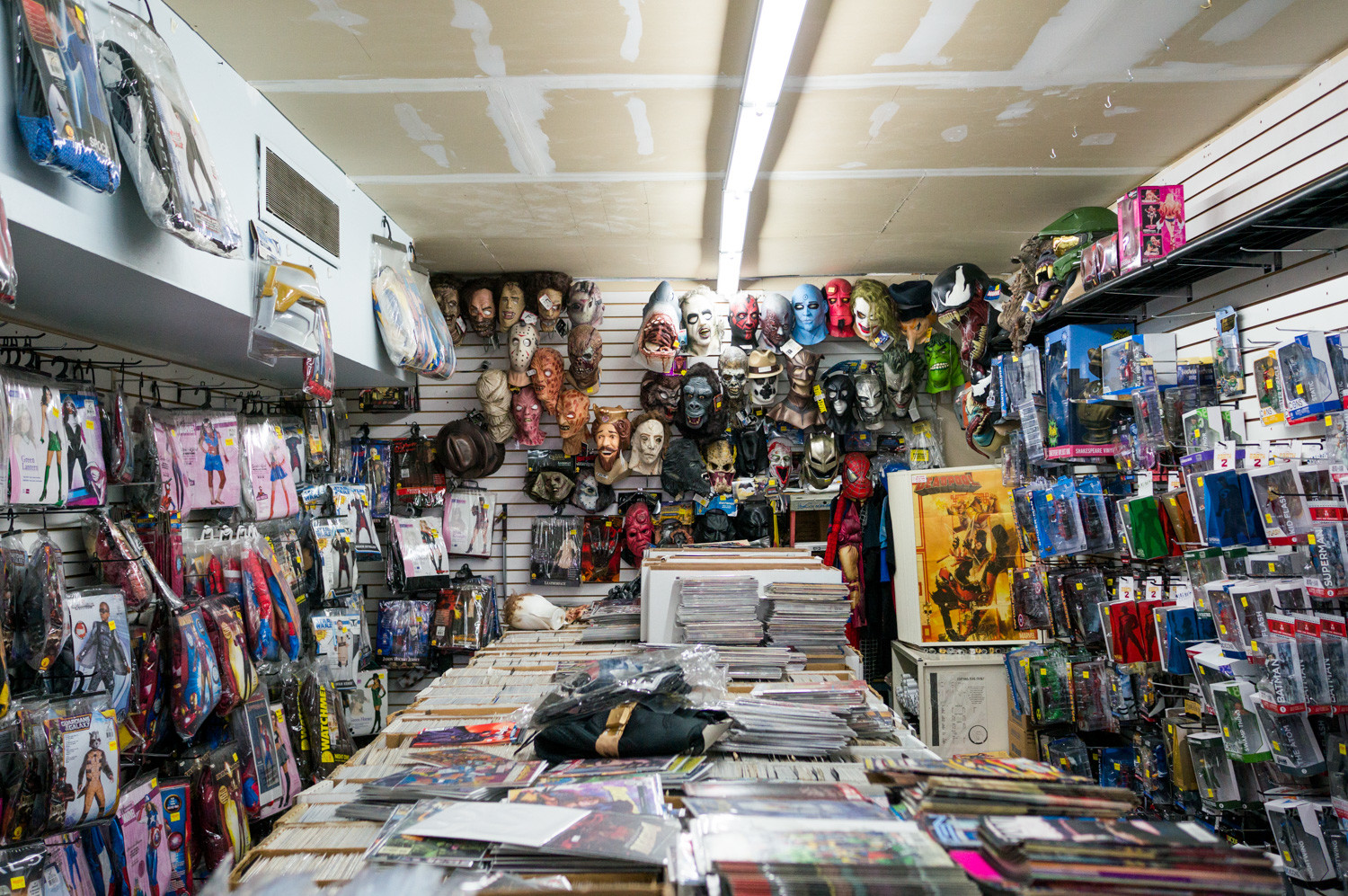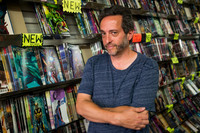Comic mecca to shutter, signaling end of era
Neil Shatzoff stands behind the glass counter amid stacks and stacks of comic books, rows of baseball cards, and shelves lined with graphic novels.
Costumes, toys and action figures inspired by comic heroes from The Flash to Catwoman hang from the walls. Boxes upon boxes of back issues dominate the space in the center of Magnum Comics and Cards on Riverdale Avenue.
“From A to Z — from The Avengers to X-Men,” said Shatzoff, wearing a gray hoodie with a black Batman logo on the front.
Magnum Comics and Cards has served fans just off West 259th Street for 27 years. But when December closes, so will Magnum. Forever.
But it doesn’t mean its owner has any plans of leaving the industry — one that has changed drastically since 1991, when Shatzoff first opened the store.
“From then until about ‘96 were the best times to be in business,” Shatzoff said. “Kids still read comics. Everyone was coming in every day. It was always a big deal.”
But comics weren’t the only thing drawing local collectors to Magnum — baseball cards made up as much as 50 percent of Shatzoff’s business, he recalled.
“This whole counter used to look like the New York skyline, with boxes of cards,” Shatzoff said. “People would come in and say, ‘Let me get 10 boxes — let me get a case of those baseball cards.’”
There were a lot of ups and downs over the years, and comic books were not the only product whose popularity fluctuated. Demand for baseball cards waned whenever there was a players strike and speculators left the market.
To be sure, there were the good days, such as the day Superman died in early 1993, or Christmas Eve of 2014, which Shatzoff described as “out of control,” because that day fell on a Wednesday. In the comic books world, Wednesdays are a big day because that’s when new releases come out.
“That actually beat the day Superman died,” Shatzoff said. “I think it was just a lot of toys selling — a lot of everything selling. A bunch of people came in at once.”
Much of these highs and lows, however, were out of Shatzoff’s control.
“It’s just the ways the times change,” he said. “Technology has taken over. When I first started, we still had the credit card machines that you had to swipe the machine. I was carrying a beeper around. There were no cell phones.”
When Shatzoff opened the shop, he recalled, kids had just nine television channels to choose from, plus a handful of cable options. Now, in addition to more channels, they can pick from a vast array of video games.
“A lot of kids don’t really need to read comics anymore,” he said. “They’re more into being the character and playing the game.”
As a result, now, the majority of Shatzoff’s most loyal customers are adults. Kids, on the other hand, “can just read the comics on their iPads or phones, and that’s it. ‘Oh, I read that story and it was great.’ But they’re not saving it.”
The content of comic books, too, has changed, with more sophisticated stories geared toward more mature readers.
“The artwork and the stories have gotten a lot better,” Shatzoff said. “Most of them are rated … like a PG-13 movie, so there are a lot of parents that object to the violence or the language.”
Comic books have become more pricey, too.
“Paper is more expensive, artists are getting a lot more money, and it’s tough because we have to order two months in advance, and we have a two- to three-week window to add or subtract from our order, but we get no returns on any of this. Whatever we buy, we eat,” Shatzoff said, glancing toward the rows of comics — The Astonishers, Batgirl, Infamous Ironman — lining the shelves.
In 1991, comics sold for a dollar each, sometimes less.
Now, they go for between $3 and $4. And while there are still a lot of comic fans out there, Shatzoff said, they’re “all over the world, and I’m in this neighborhood.”
Sometimes, he’ll sell on eBay to people in the Bronx and Yonkers, and urges them to swing by the shop. But the response he often gets is, “Nah, I don’t have time. It’s easier if you just send it to me.”
This is a far cry from the early ‘90s, Shatzoff said, when people would drive to “any location” to get their hands on coveted new volumes.
“But now, you don’t have to drive anywhere,” he said.
“You can just ring it up.”
Even with Magnum Comics and Cards shuttering next month, Shatzoff insists it’s not because he’s going out of business. Rather, he’s adapting.
“Having a stand-alone store, it almost doesn’t pay anymore to keep it open when I’ve got more business coming up online than I have people actually walking into the place,” he said. “Why pay the overhead?”
“And,” he added, “after 27 years, I need a vacation.”
Still, Shatzoff says he’ll continue to order books from Diamond Comics — one of the world’s largest distributor of English-language comics, graphic novels and pop-culture-related merchandise — and hand-deliver them to his most devoted collectors.
“Now it’ll be like, ‘Hey, meet me at the diner, I got your stuff’ — because they know exactly what they want,” he said. “They’ll still get their books.”
From when he was a kid, Shatzoff loved comics, but he said he “never imagined in a million years” his hobby would turn into a career.
“It wasn’t my goal in life to open up a comic book store,” he said. “I knew I was going to be in business somehow. I just never knew that I would be doing it for this long.”
Shatzoff now is looking beyond this part of the city — and the country — with ample opportunities in Texas, Florida, Colorado and the west coast. For instance, he just sold an early Spider-Man comic book for $720 to someone in California.
“Meanwhile, I can’t sell it here,” Shatzoff said. “But in L.A., I could sell it to a whole bunch of people.
“Comics, if you have room for them, they’re a good investment. But if you actually read the story and put it away, and one day it’s worth something — that’s nice. There aren’t too many things you can do that with.”











